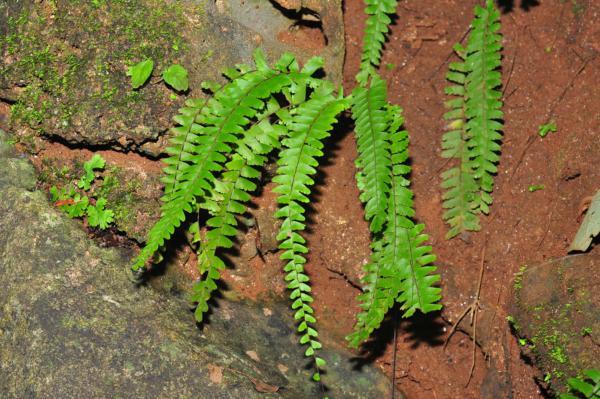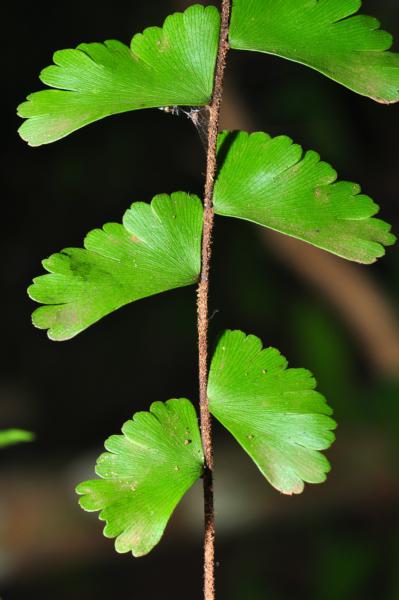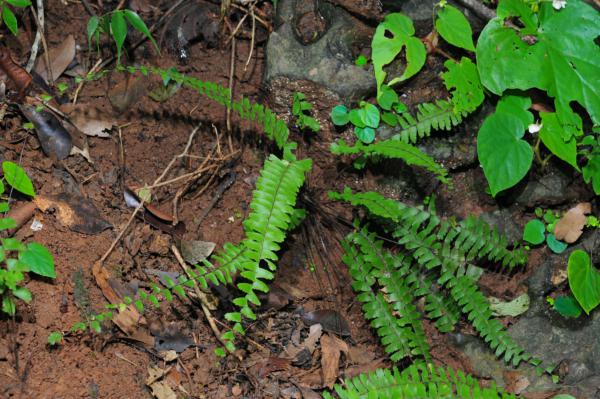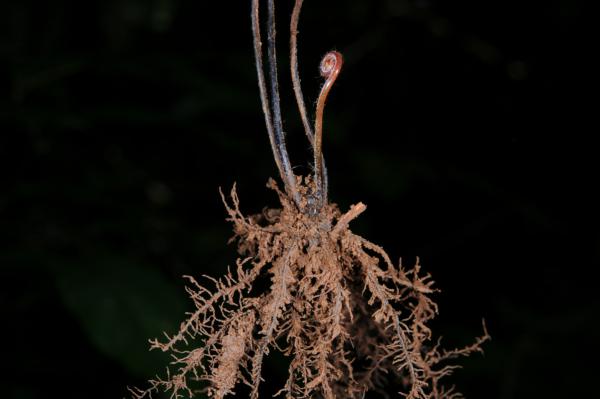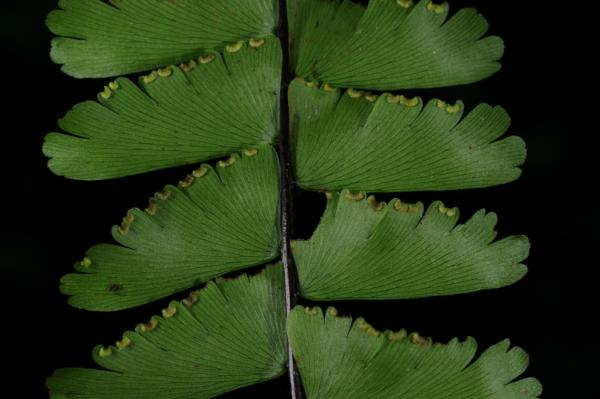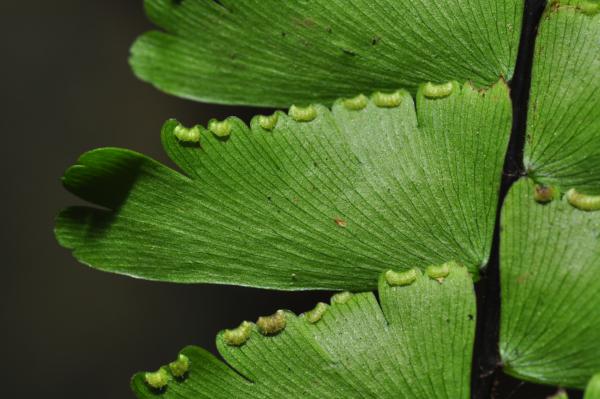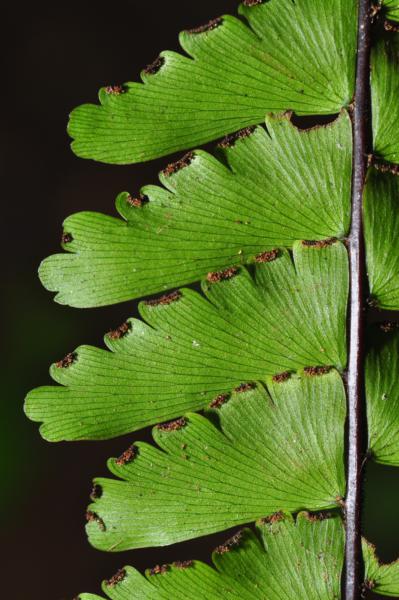
Adiantum zollingeri Mett. ex Kuhn
Etymology
According to Holttum (1954), the botanical name, Adiantum (unwetted) refers to the way in which water-drops run off the surface of the pinnae without wetting them.
Family
Pteridaceae, subfamily Vittarioideae
Nomenclature
Adiantum zollingeri Mett. ex Kuhn, Ann. Mus. Bot. Lugduno-Batavi 4: 280. 1869; Tagawa & K.Iwats., SouthE. Asian Stud. 5: 109. 1967; Holttum, Rev. Fl. Malaya, ed. 2, 2: 638. 1968; Tagawa & K.Iwats., Fl. Thailand 3: 208, f. 16.3. 1985; Boonkerd & Pollawatn, Pterid. Thailand: 119. 2000; Newman et al., Checkl. Vasc. Pl. Lao PDR: 31. 2007.
Adiantum caudatum var. subglabrum Holttum, Rev. Fl. Malaya ed. 1, 2: 600. 1955 [‘1954’].
Description
Terrestrial or lithophytic. Rhizome short, erect, densely scaly at apex; scales linear, 4–6 mm long, 0.10.3 mm wide, margin entire, bicoloured with a darker centre and paler margin. Stipes 5–15 cm long, castaneous to nearly black, densely hairy with long, multicellular, brown hairs, scaly at base. Laminae linear, pinnate, gradually narrowing upwards, 12–44 by 1.5–4.5 cm; rachis hairy on upper surface, perfectly glabrous on lower surface, usually prolonged, sometimes leafless on upper part, often rooting at tip; 23–39 pairs of lateral pinnae, upper lateral pinnae becoming smaller and more spaced; lower pinnae smaller and reflexed; larger pinnae sessile, nearly parallelogram-shaped, round at apex, lower margin almost straight, to form narrowly cuneate base with lower margin, 7–22 by 3–11 mm, upper and outer margins lobed at most to less than 1/3 of width of pinnae, forming distinct sinus; lobes round or spathulate, round to subtruncate and slightly toothed at apex, each including 5 to 7 veinlets; papyraceous, almost glabrous or very sparsely hairy on veins and at margin of pinnae; veins rather indistinct on both surfaces. Sori on apices of lobes, reflexed flaps circular or elongate, glabrous or sparsely hairy .
Distribution in Thailand
NORTHERN: Mae Hong Son, Chiang Mai, Lamphun, Lampang, Phrae, Tak; NORTH-EASTERN: Phetchabun, Loei; EASTERN: Chaiyaphum, Nakhon Ratchasima; SOUTH-WESTERN: Uthai Thani, Kanchanaburi, Ratchaburi, Phetchaburi, Prachuap Khiri Khan; CENTRAL: Nakhon Nayok; PENINSULAR: Surat Thani, Phangnga, Nakhon Si Thammarat, Satun.
Distribution in Cambodia
Mondulkiri.Wider Distribution
Himalaya to W Malesia.
Ecology
On dry ground or on muddy limestone in deciduous or evergreen forests up to 1100 m altitude.
Similar species
Proposed IUCN Conservation Assessment
Least Concern (LC). This species is common and widespread.
Notes
The hairiness is somewhat variable, especially on the pinnae. In some cases, pinnae are almost glabrous even in the young stages, though there are plants with hairy pinnae. The lobing of the pinnae is also fairly characteristic, not so deeply incised as in A. caudatum.
Voucher specimens - Thailand
Geesink et al. 6945, Chaiyaphum, Ban Lui Lai (P).
Voucher specimens - Cambodia
Long et al. CL334 & CL346, Mondulkiri (P).
Habit
Upper surface of lamina
Habit
Rhizome and crozier
Lower surface of lamina and young sori
Young sori
Older sori
Site hosted by the Royal Botanic Garden Edinburgh. Content managed by Stuart Lindsay, Gardens by the Bay, Singapore and David Middleton, Singapore Botanic Gardens. Last updated 24 January 2012
